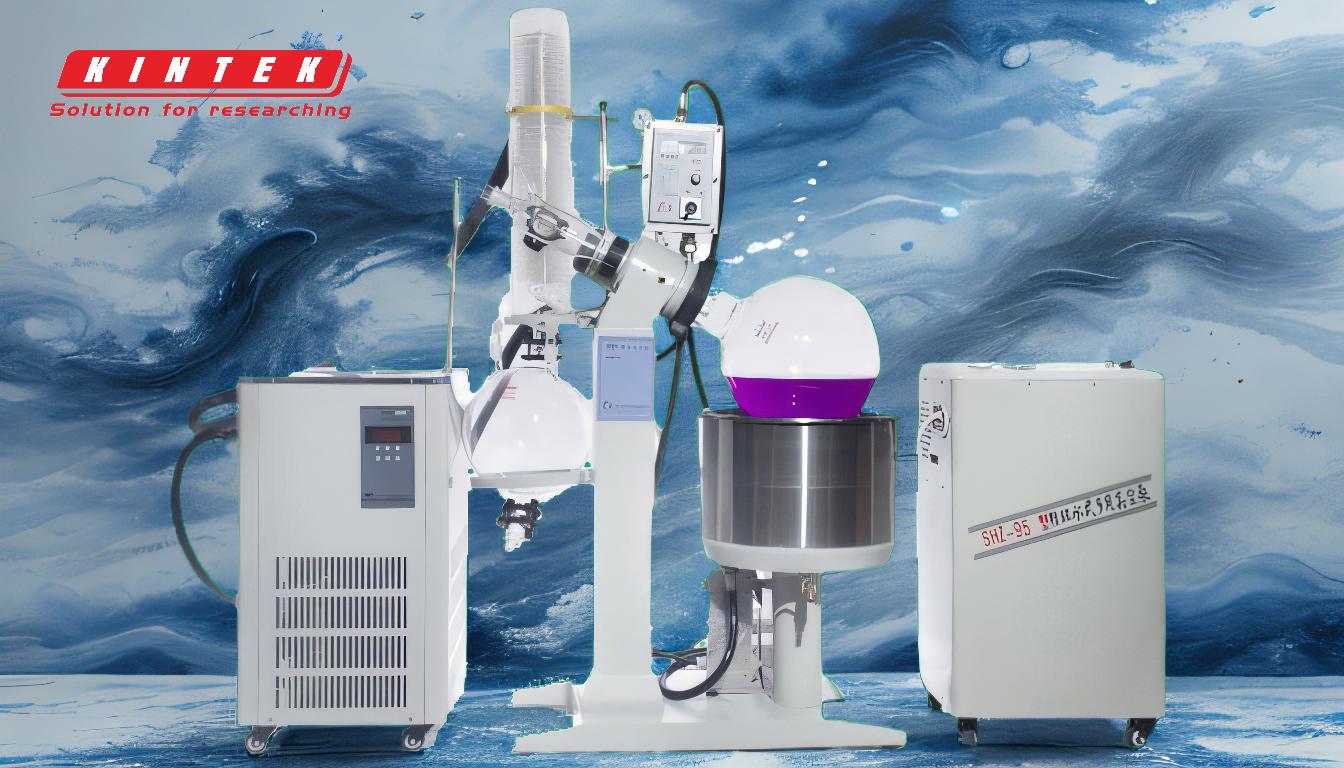Simple distillation is a fundamental technique used to separate liquids based on their boiling points. It involves heating a liquid mixture to its boiling point, allowing the vapor to form, and then condensing the vapor back into a liquid. This process is particularly effective for separating components with significantly different boiling points, typically requiring a difference of at least 70°C. The method is widely used in applications such as purifying water, creating homemade perfumes, and producing liquor. The process is straightforward but requires careful control of temperature and stirring to ensure effective separation and collection of the desired components.
Key Points Explained:

-
Principle of Simple Distillation:
- Simple distillation works on the principle that different liquids have different boiling points. When a mixture is heated, the component with the lower boiling point vaporizes first. The vapor is then condensed back into a liquid and collected separately from the remaining mixture.
- This method is most effective when the boiling points of the components differ by at least 70°C, ensuring a clear separation.
-
Equipment and Setup:
- The basic setup for simple distillation includes a heating source, a boiling flask, a condenser, and a collection flask. The mixture is placed in the boiling flask and heated. As the liquid boils, the vapor travels through the condenser, where it is cooled and converted back into a liquid, which is then collected in the collection flask.
- It is crucial to ensure all connections are secure and that the equipment is in good working order to prevent leaks and ensure efficient condensation.
-
Temperature Control:
- Temperature control is vital in simple distillation. The heating source should be set to a temperature slightly above the boiling point of the component to be separated. For example, if distilling water from a salt solution, the temperature should be set just above 100°C.
- If the reaction is slow, the temperature can be increased incrementally, but care must be taken not to overheat, which could cause the mixture to boil too vigorously and lead to contamination of the distillate.
-
Stirring and Vacuum:
- Stirring helps to ensure even heating and prevents localized overheating, which can cause bumping (sudden, violent boiling). Stirring speeds are typically set around 200 RPM but can be increased to 900-1000 RPM if the reaction subsides.
- In some setups, a vacuum pump may be used to lower the pressure, which can reduce the boiling points of the components and allow for distillation at lower temperatures. After distillation, the vacuum pump should be turned off, and the system should be vented to atmospheric pressure.
-
Applications of Simple Distillation:
- Simple distillation is used in various applications, including the purification of water, the production of alcoholic beverages, and the creation of essential oils and perfumes. It is also used in laboratories to separate and purify chemical compounds.
- This method is particularly useful for mixtures contaminated with nonvolatile particles or for nearly pure mixtures with less than 10% contamination.
-
Limitations of Simple Distillation:
- Simple distillation is not suitable for separating components with similar boiling points, as the vapor will contain a mixture of both components, leading to incomplete separation.
- The process provides only a moderate improvement in purity, as the vapor may still contain traces of the higher boiling point component. For more precise separations, fractional distillation or other advanced techniques may be required.
-
Safety and Precautions:
- Safety is paramount when performing simple distillation. The equipment should be checked for leaks, and all connections should be secure. Insulation may be used to protect the boiling flask and improve efficiency.
- The process should be monitored closely to prevent overheating, which could lead to boiling over or even explosions in extreme cases. Proper ventilation is also essential to avoid the buildup of potentially harmful vapors.
In summary, simple distillation is a versatile and widely used method for separating liquids based on their boiling points. It requires careful control of temperature, stirring, and equipment setup to ensure effective and safe separation. While it has limitations, particularly with mixtures of similar boiling points, it remains a fundamental technique in both industrial and laboratory settings.
Summary Table:
| Aspect | Details |
|---|---|
| Principle | Separates liquids with boiling point differences of at least 70°C. |
| Equipment | Heating source, boiling flask, condenser, collection flask. |
| Temperature Control | Set slightly above the boiling point of the desired component. |
| Stirring | Prevents bumping; speeds range from 200 RPM to 900-1000 RPM. |
| Applications | Purifying water, producing liquor, creating perfumes, and lab separations. |
| Limitations | Ineffective for components with similar boiling points. |
| Safety Tips | Check for leaks, monitor temperature, and ensure proper ventilation. |
Need help with distillation equipment or processes? Contact our experts today!









